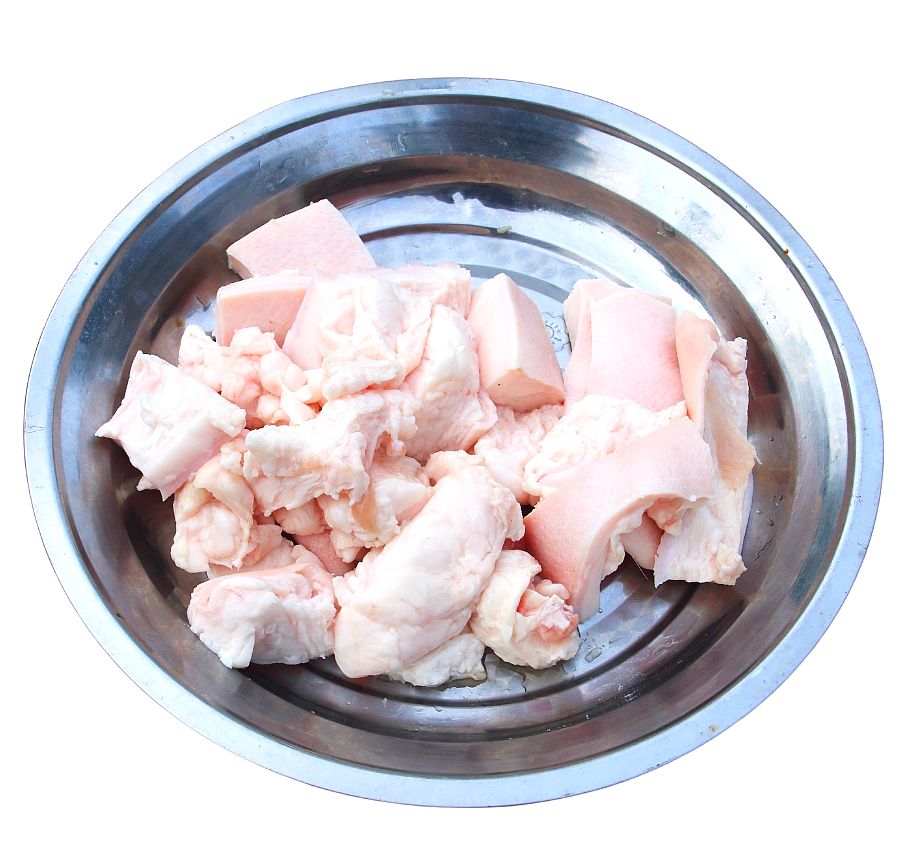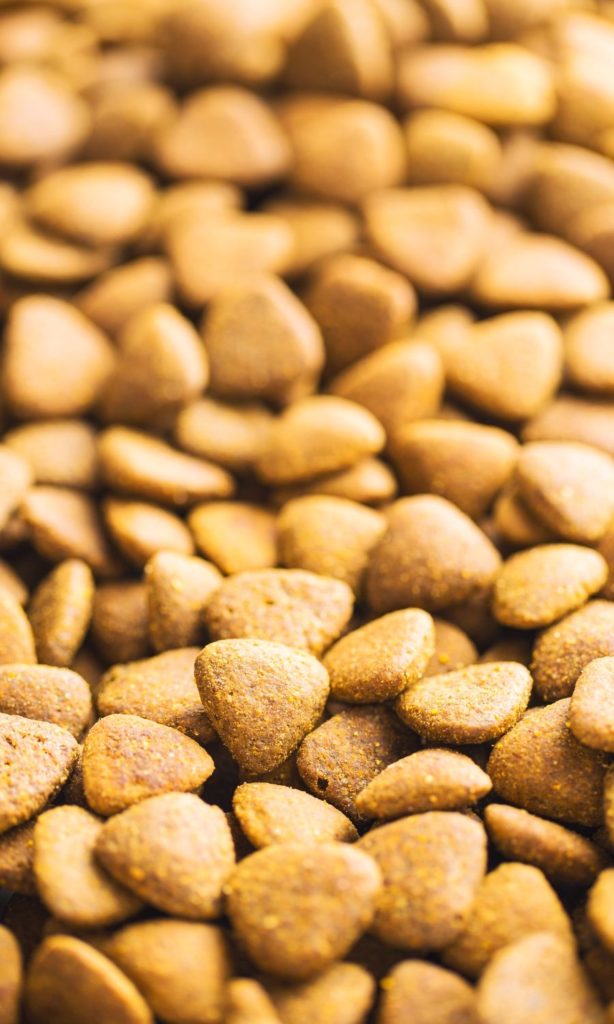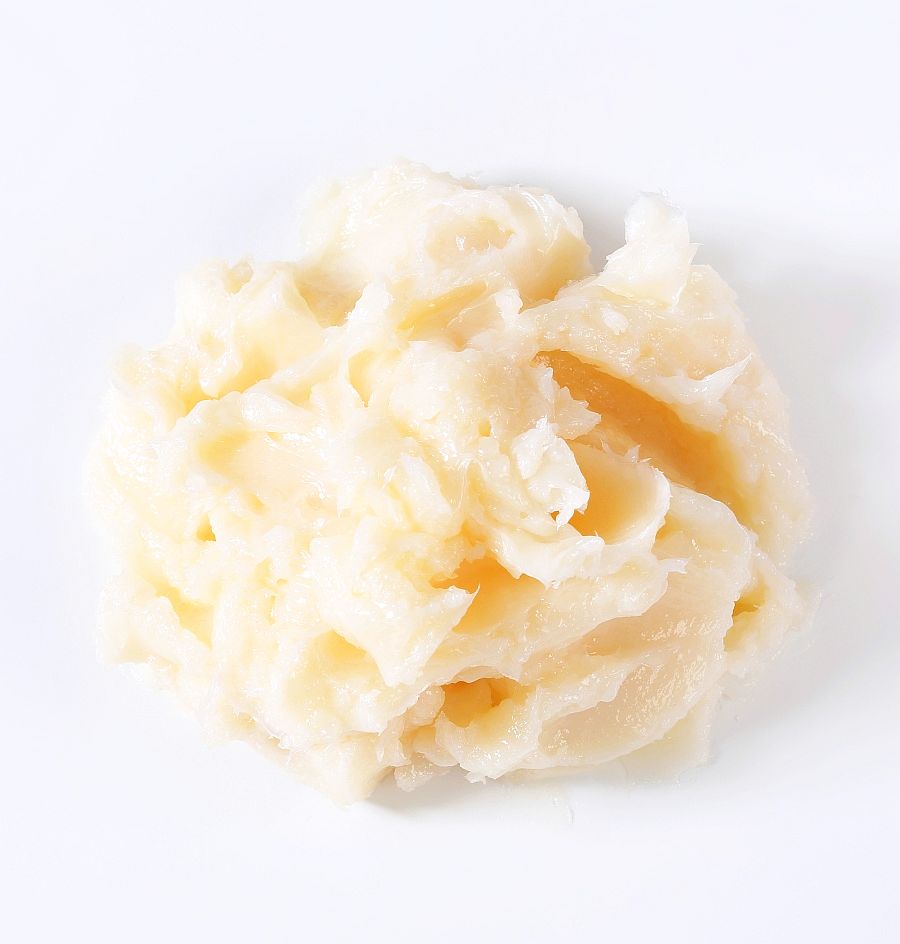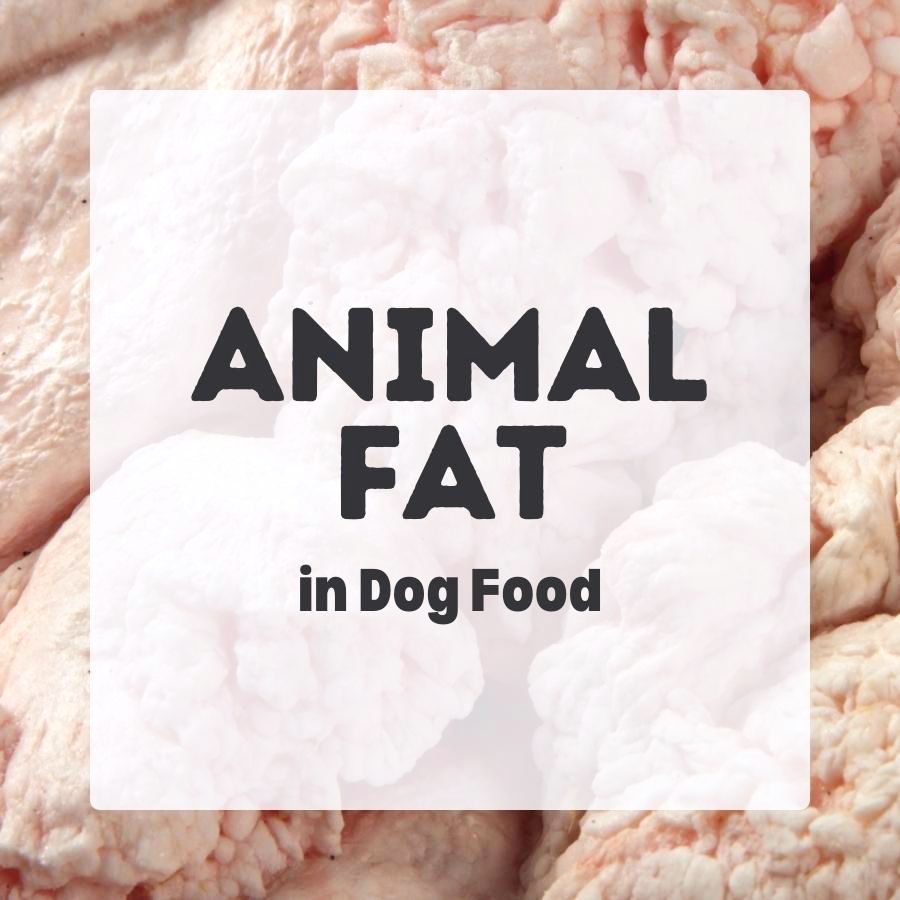Animal fat in dog food provides flavor, energy, and nutrients. However, the sources and quality of this common ingredient can vary significantly between dog food products.
Contents
What is Animal Fat?
Animal fat is a common ingredient in many commercial dog foods.
It usually is a co-product of meat meal processing, which involves rendering waste animal tissue at somewhat high temperatures.
During this process, the fat is separated from the protein in the source material. The extracted fat may be used in food products.

If the source material was mainly comprised of fatty tissues, you get cracklings or greaves after melting out most of the fat.
Animal fat has to contain at least 90% fatty acids overall[1].
Manufacturers often pre-treat animal fats with antioxidants or chemical preservatives such as BHA, BHT, ethoxyquin, or mixed tocopherols to prevent them from going rancid.
Animal Fats in Dog Food
Animal fat in dog food provides energy, fatty acids, and flavor. It may also contain some fat-soluble vitamins.
Compared to carbohydrates and protein, fat is the most efficient source of energy. And fatty acids are essential nutrients in a dog’s diet.
Additionally, many dry foods are coated with animal fat to provide some shine and flavor.

So animal fat is a nutritious and beneficial ingredient.
Animal fat can come from all kinds of different raw materials used to make meat meals. If it was rendered from named sources, it has to be named according to its raw material[1].
For example:
- chicken fat
- duck fat
- turkey fat
- poultry fat
- pork fat
- bacon fat
- pork grease
- pork lard
- lamb fat
- beef tallow
- beef fat
Technically, fish oil is also an animal fat obtained during processing. It includes named fats such as salmon oil or herring oil.
By the way, the basic difference between a fat and an oil is only whether the substance is solid or liquid at room temperature.
Is Animal Fat Ok For Dogs?
Dogs need some form of fat in their diet. And animal fats are a good source of energy and essential fatty acids for dogs.
Many dog owners believe that, compared to plant or seed oils, animal ingredients provide the most dog-appropriate type of fat.
But there are some differences in quality.
First of all, we like to know what our dogs eat (and what we’re paying for).
The problem with ambiguously named ingredients like ‘animal fat’ is that it’s impossible to determine their quality.
They could potentially originate from any animal commonly used to make meat meals, most often it’s poultry, beef, or pork.
| Nutrients in 100g[2] | Pig Fat | Beef Fat | Chicken Fat |
|---|---|---|---|
| Energy | 902 kcal | 902 kcal | 900 kcal |
| Cholesterol | 95 mg | 109 mg | 85 mg |
| Fatty Acids | |||
| Saturated | 39.2 g | 49.8 g | 29.8 g |
| Monounsaturated | 45.1 g | 41.8 g | 44.7 g |
| Polyunsaturated | 11.2 g | 4 g | 20.9 g |
| – Linoleic acid (Omega-6) | 10.2 g | 3.1 g | 19.5 g |
Failing to specify this ingredient gives manufacturers the flexibility to modify their recipes between batches. So they can switch between fat sources based on availability or price.
So you don’t know if he’s cutting corners and only using the cheapest fats available or ingredients with inconsistent quality.
To be fair, even named fat sources are often low-quality.
For example, beef tallow contains on average a lot more saturated and monounsaturated fatty acids compared to chicken fat which is high in omega-6 fatty acids. And fish oils provide way more omega-3 fatty acids than poultry or mammal fats.

The best you can do is to choose a recipe with clearly named fats on the label instead of vague terms like just animal or poultry fat. And maybe rotate your dog’s diet from time to time.
Another problem with animal fats is that many suppliers use some kind of antioxidant or other preservative, many of which are very controversial, such as ethoxyquin, BHT or BHA!
So look out for chemical preservatives on the dog food label!
Last but not least, rendered animal fat is a processed ingredient produced at high temperatures. And it gets processed a second time during dog food manufacturing.
But that’s the deal with all convenience foods, I guess.
Further Reading
[1] AAFCO Official Publication. Chapter 6. Free Access.
[2] U.S. Department of Agriculture. Agricultural Research Service. FoodData Central. 2019. fdc.nal.usda.gov
